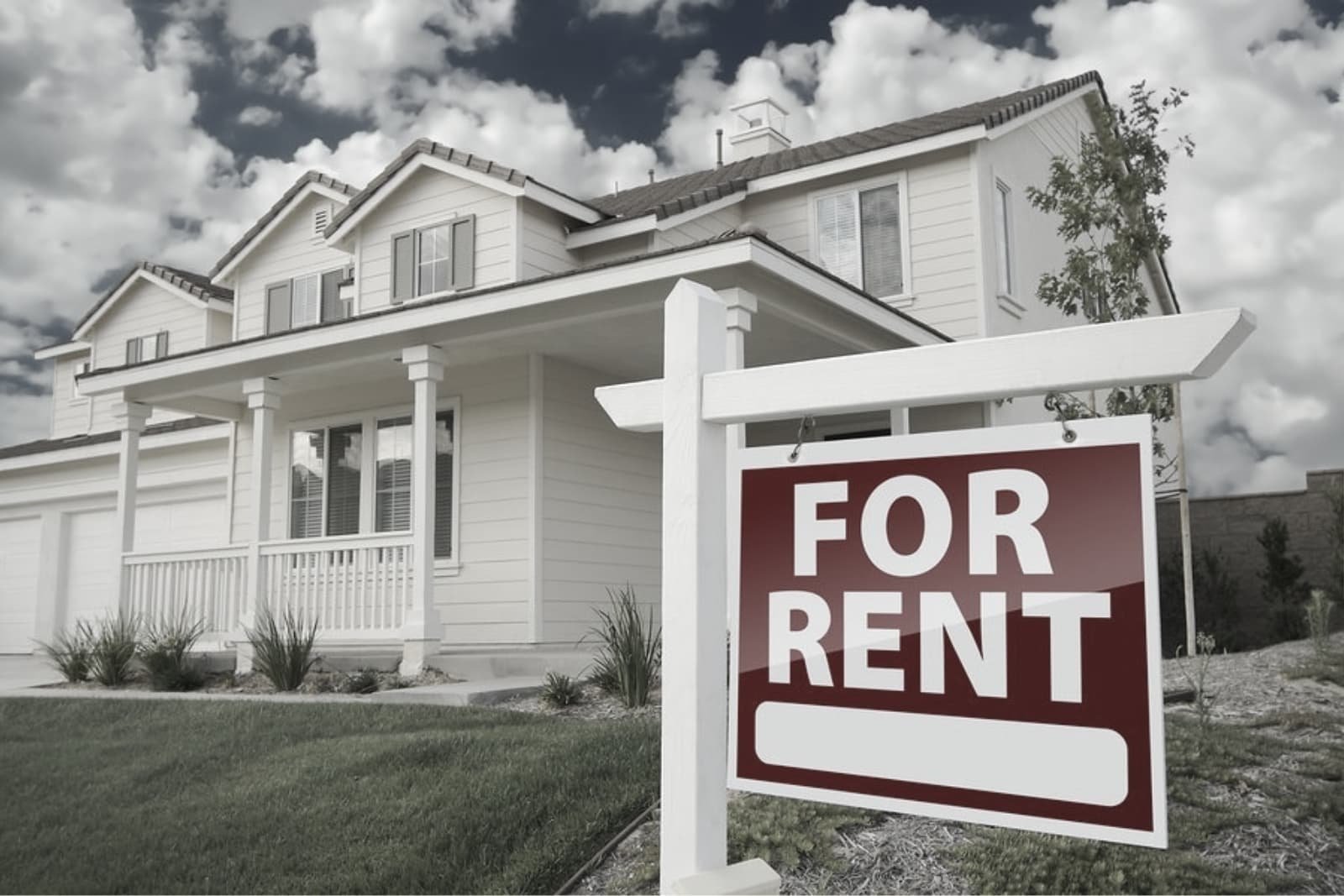
Hoya Capital Investor Education:
REIT SEctors
Apartments
The $4-5 trillion US multifamily apartment market is highly fragmented, with REITs owning roughly 500,000 of the estimated 25 million multifamily rental units across the US, which is roughly 2% of the existing rental apartment stock. Multifamily rentals comprise roughly 15% of the total housing stock in the US - in aggregate valued at $30 trillion - but have accounted for a greater share of new home construction activity in the post-recession period. Apartment REIT portfolios are skewed towards the upper end of the rent spectrum, making them less exposed to the direct effects of rent control, but many of the larger REITs do focus on coastal markets that are more at-risk of an unfriendly regulatory environment for real estate owners.
HoMEBuilders
The US single-family homebuilding sector is a highly cyclical, competitive, and fragmented industry. The top 10 largest builders account for roughly a quarter of the total new home sales, but this concentration has intensified since the recession in a trend we've described as "Go Big or Go Home" due to the challenging economics of homebuilding, a business where net operating margins are typically in the single digits even in the very best of times. New home construction has been slow to recover since plunging during the recession, and by nearly every metric, the US has been significantly under-building homes - particularly single-family homes - over the last decade.
Single Family Rentals
The roughly $5 trillion US single-family rental (SFR) market is highly fragmented, with REITs owning roughly 150,000 of the estimated 15 million SFR rental units across the US, which is roughly 1% of the existing SFR stock. SFR REITs focus on markets that have experienced the strongest economic growth during this recovery, most notably in the Sunbelt and western regions. Many of these markets were hit particularly hard by the housing bubble, which allowed institutional investors to buy distressed properties in bulk. The key evolution in the SFR business over the last several years - and a trend that we expect to continue - has been the focus on achieving market-level scale and density rather than broader geographic diversification.
Manufactured housing
Manufactured housing is typically the most affordable non-subsidized housing option in most markets, and roughly 7% of the US population lives factory-built manufactured homes and shipments of these units represent roughly 10% of housing starts in a typical year (although they are not included in the official US Census Bureau estimates). Due to local zoning ordinances, the placement of manufactured homes ("MH") and recreational vehicles ("RV") is generally limited by municipalities to designated "land lease" communities, of which there are roughly 38,000 across the country.
Data Centers
Data Centers are the home of the "cloud, the physical epicenter of the internet. Typically housed in windowless industrial-style buildings surrounded by massive generators and cooling equipment, data centers provide the critical infrastructure - power, cooling, and physical rack space - to a variety of enterprise customers with different networking and computing needs, who generally install and manage their own server and computing equipment in the facilities. Typically housing millions of terabytes of mission-critical data for thousands of individual customers, physical data security and operational reliability are crucial attributes of data center facilities. Data Center REITs own roughly 30% of investment-grade data center facilities in the US and command roughly a fifth of data center capacity globally.
Cell Towers
Cell tower REITs own roughly 50-80% of the 100-150k investment-grade macro cell towers in the United States. Cell Tower REITs primarily own "macro" communications towers that host cellular network broadcast equipment from AT&T (T), Verizon (VZ), T-Mobile (TMUS), and Sprint (S), but Crown Castle and Uniti Group also have significant investments in fiber and small-cell networks. While Crown Castle operates exclusively in the United States, American Tower and SBA Communications have significant international operations. While long-term growth in international markets is expected to outpace domestic growth, it comes with increased risks as well, highlighted by American Tower's significant struggles in India.
Industrial
Riding the e-commerce wave, industrial REIT performance has been relentless over the past half-decade as retailers and logistics providers have invested heavily in supply chain densification and physical distribution networks in a relentless "need for speed" arms race. Perhaps only overshadowed by the residential REIT sector, industrial REITs continue to enjoy some of the strongest property-level fundamentals across the real estate sector, highlighted by average same-store NOI growth near 5% per year since 2015.
Net LEase
"Net lease" refers to the triple-net lease structure, whereby tenants pay all expenses related to property management: property taxes, insurance, and maintenance. Like a ground lease, triple-net leases result in long-term, high-margin, relatively predictable income streams, and as a result, the sector is viewed seen as more "bond-like" than other REIT sectors. With these bond-like lease characteristics, naturally, comes a higher level of sensitivity to movements in interest rates. One of the most interest rate-sensitive REIT sectors, net lease REITs generally perform best in the "Goldilocks" macroeconomic environment of low interest rates and steady economic growth. Operating more like a financing company than other REIT sectors, external acquisitions are a critical component of the net lease business model.
Student Housing
Purpose-built student housing facilities hold unique investment and operational attributes compared with traditional multifamily properties. Purpose-built student housing facilities are generally cheaper and are equipped with more applicable amenities for students than typical off-campus housing facilities. Student housing facilities are generally rented "by-bed" rather than "by-unit" and there is generally a much shorter "leasing window," as beds that are unfilled at the start of the school year are likely to sit vacant until the next school year. Student housing assets, especially off-campus units that are not part of a university partnership, are also exposed to changes in university housing policies that can result in significant asset impairment.
Hotels
In the US, there are roughly 5 million hotel rooms across 50,000 individual hotel properties. The hotel ownership business is a highly fragmented industry with hotel REITs owning less than 5% of all hotel assets across the United States. Hotel occupancy tends to peak in August and bottom in January with guests paying an average daily rate of roughly $125 per night. Properties are typically segmented into "full-service" or "select service" categories and in general, public REITs portfolios tend to be concentrated in the higher-quality end of the spectrum and own primarily full-service hotels in coastal urban markets or resorts.
Healthcare
There are five sub-sectors within the healthcare REIT category, and each of these sub-sectors has distinct risk/return characteristics: Senior Housing, Skilled Nursing, Hospital, Medical Office, and Research/Lab. The senior housing sub-sector can be further split into two categories based on lease structure: triple-net leased properties and RIDEA or SHOP (senior housing operating) properties, which tend to be more sensitive to underlying industry fundamentals. Policy-risk is an important factor for the skilled nursing and hospital sub-sectors, which derive a significant portion of their revenue mix from public and private health insurance reimbursements.
Storage Units
Self-storage units are the "Hotel California" of the real estate sector: once you're checked-in, "you can never leave." Despite storage units typically being rented on a month-by-month basis, nearly half of renters stay longer than two years, and many of the 30 million self-storage renters in America park their possessions in a storage unit for a decade or more. There are roughly 50,000 self-storage facilities throughout the country and proximity to one's home (generally 3-5 miles) is cited as the most important feature. 70% of customers are residential, with the other 30% split between businesses, students, and the military.
MAlls
Once heralded as a perennial outperformer, mall REITs have had a tough decade, to say the least, as the rapid growth of e-commerce has sent shockwaves through the broader retail industry. While nearly 90% of total retail sales are still completed through the traditional brick and mortar channels, e-commerce sales account for roughly a fifth of “at-risk” retail categories, which exclude food, auto, and gasoline sales and brick and mortar retailers have been losing share at a rate of roughly 1% per year. The market share loss has been even more significant for the traditionally mall-based retail categories including department stores, clothing, sporting goods/books, and electronics retailers.
Shopping Centers
Open-air shopping center REITs have characteristics that are generally viewed as less exposed to the retail-related headwinds compared to their mall REIT cousins with a tenant base that has exhibited a higher degree of resilience and adaptability to the continued pressures on the brick and mortar retail sector. The bifurcation between high and low-quality retail centers, however, continues to widen with grocery, discount, and hardline-anchored (hardware, home improvement) locations viewed as more valuable than shopping centers anchored by softline, hobby/specialty, and electronics retailers.
Office
Office REITs tend to hold assets in the higher-tiers of the quality spectrum relative to the national average, holding nearly a quarter of all Class-A CBD office buildings in the United States. As a whole, office REITs tend to be concentrated in coastal "gateway" markets, where post-recession job growth has been strongest, but where supply growth has also been most prevalent. Office REITs are classic Growth REITs, exhibiting a lower degree of interest-rate-sensitivity and a higher degree of economic sensitivity than the REIT sector average
Timber
Timber REITs own nearly 30 million acres of US timberlands, more land than the smallest five states in the US combined. Primarily concentrated in the Pacific Northwest and the Southern US, there are roughly 200 million acres of commercially-forested timberlands. The newest addition to our coverage universe, Timber REITs are typically considered a “specialty” real estate sector and comprise roughly 2-3% of the broad REIT ETFs. We view Timber REITs as a link connecting the commercial REIT sector with the residential construction sector. Residential construction is responsible for roughly half of wood product consumption in the US.
Want More?
Join Hoya Capital’s Income Builder on Seeking Alpha for more in-depth research and analysis. Plus, get a two-week free trial of our premium subscription when you sign up here.
Get fresh content and commentary from the team at Hoya Capital and outside industry experts on everything real estate, REITs and more.
Members gain complete access to our investment research and our suite of trackers and exclusive portfolios targeting premium dividend yields of up to 10%.
















